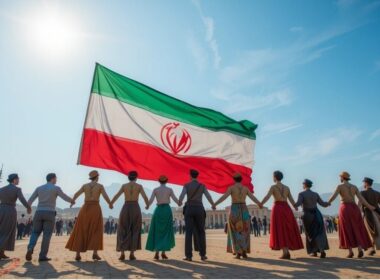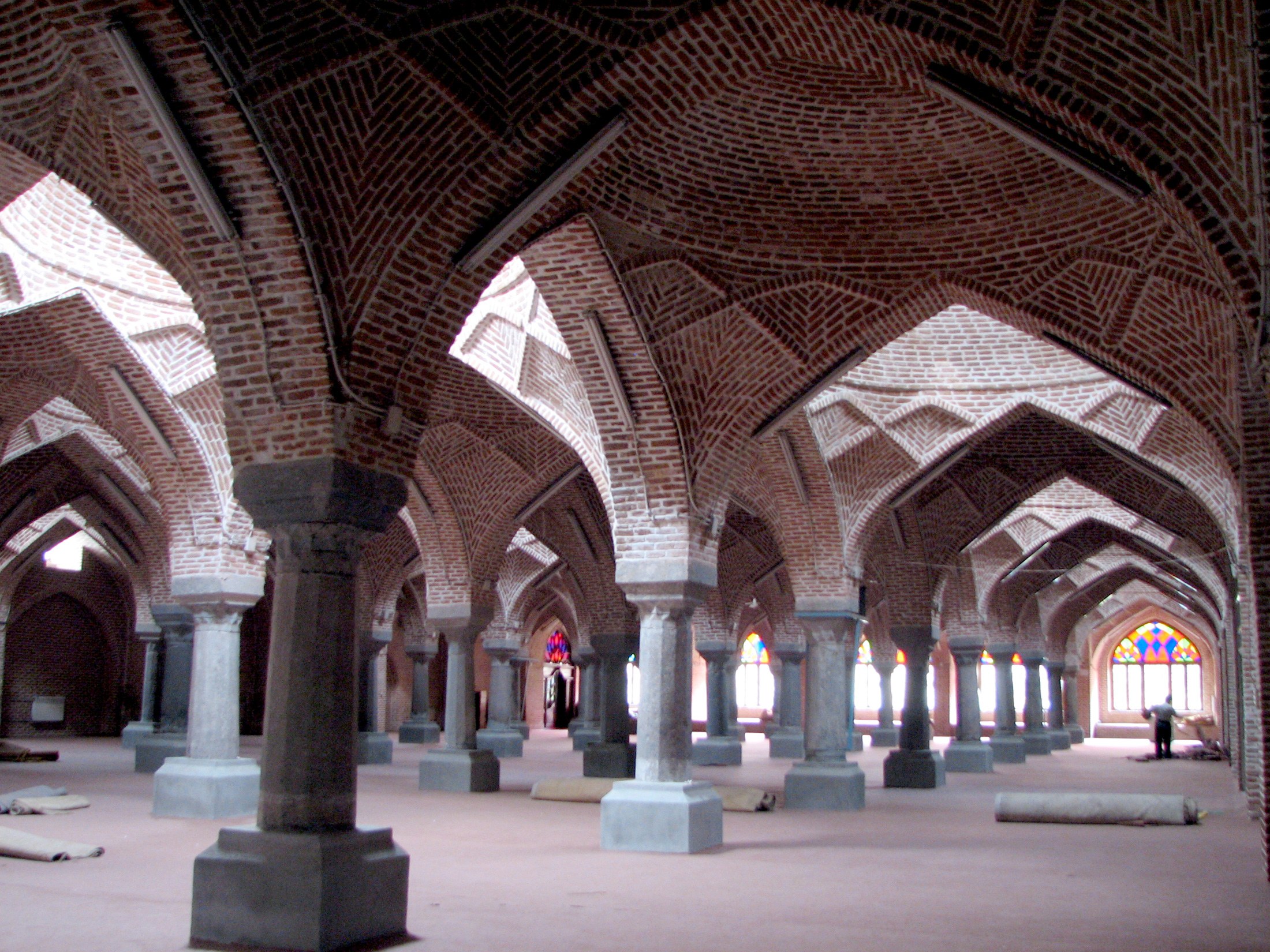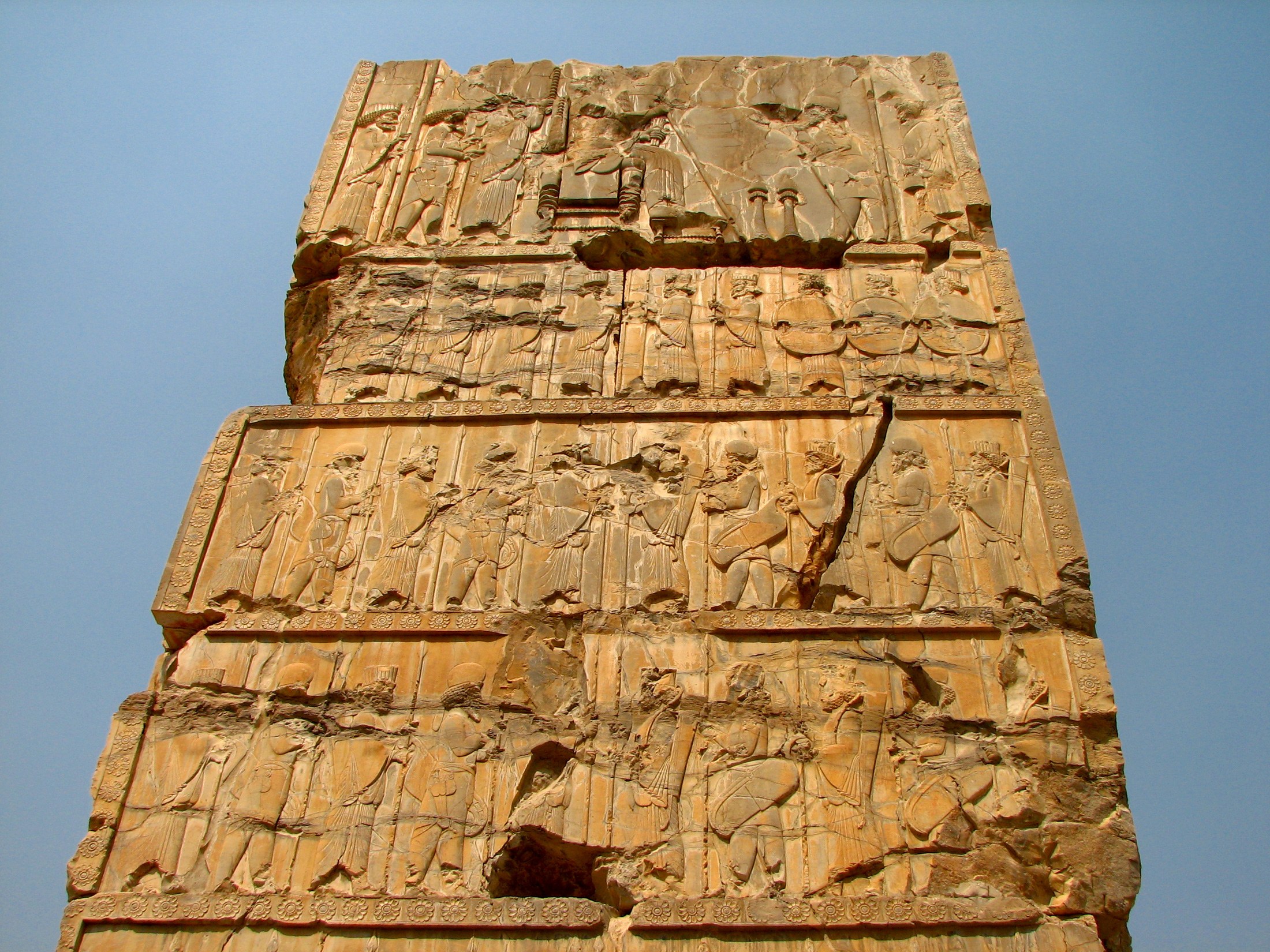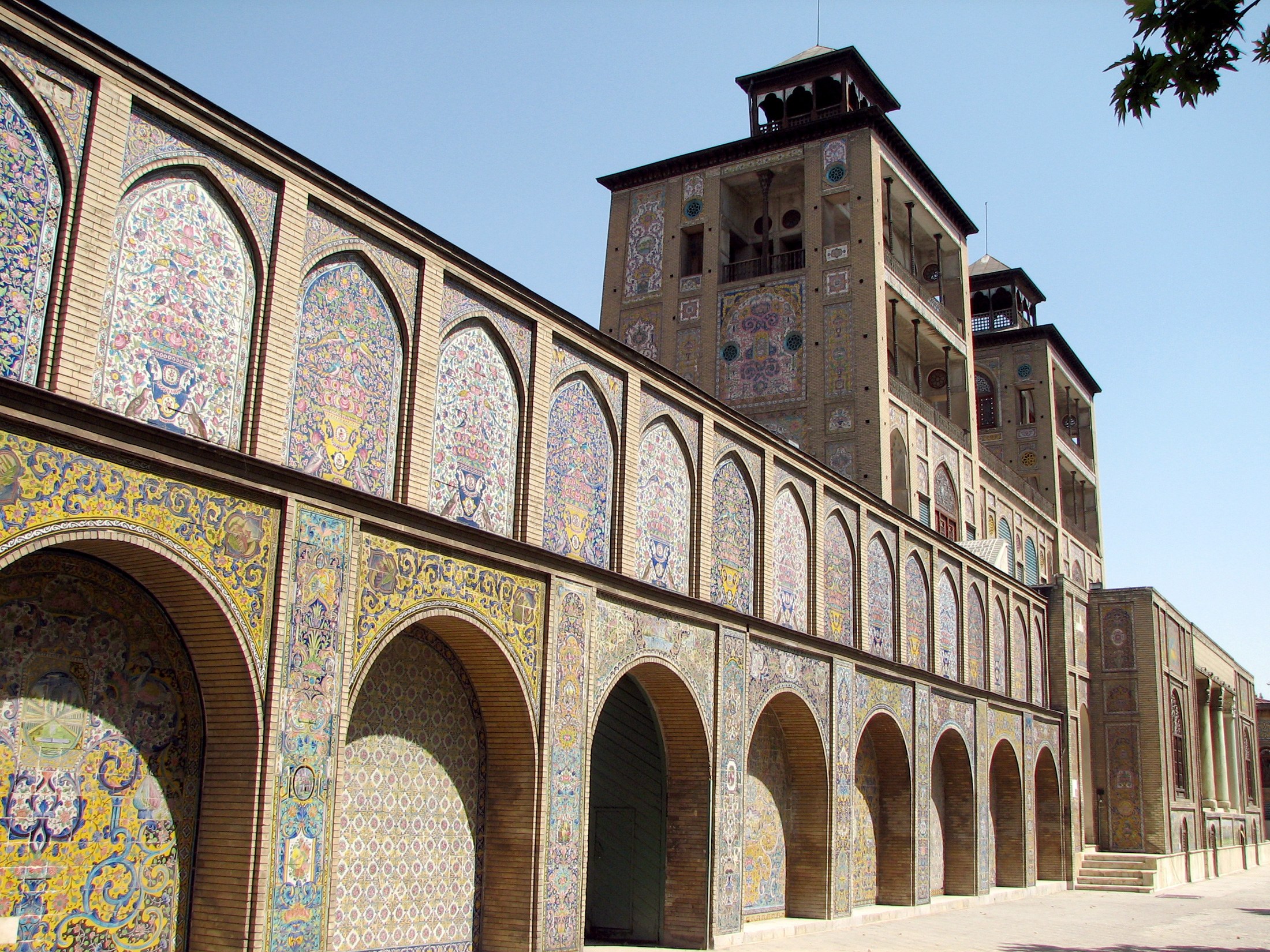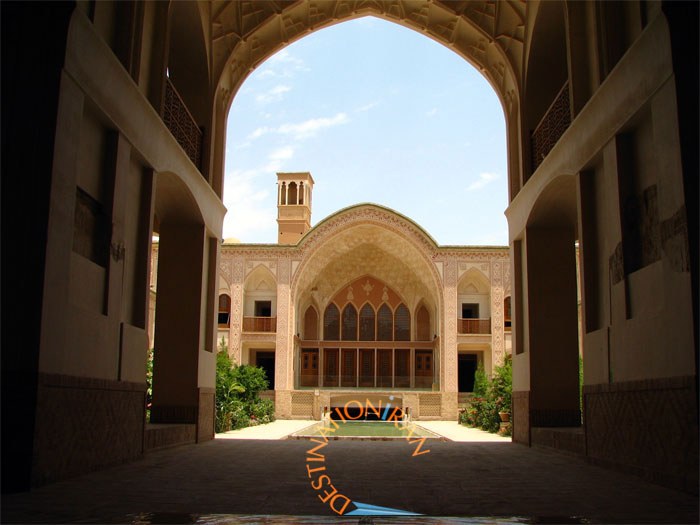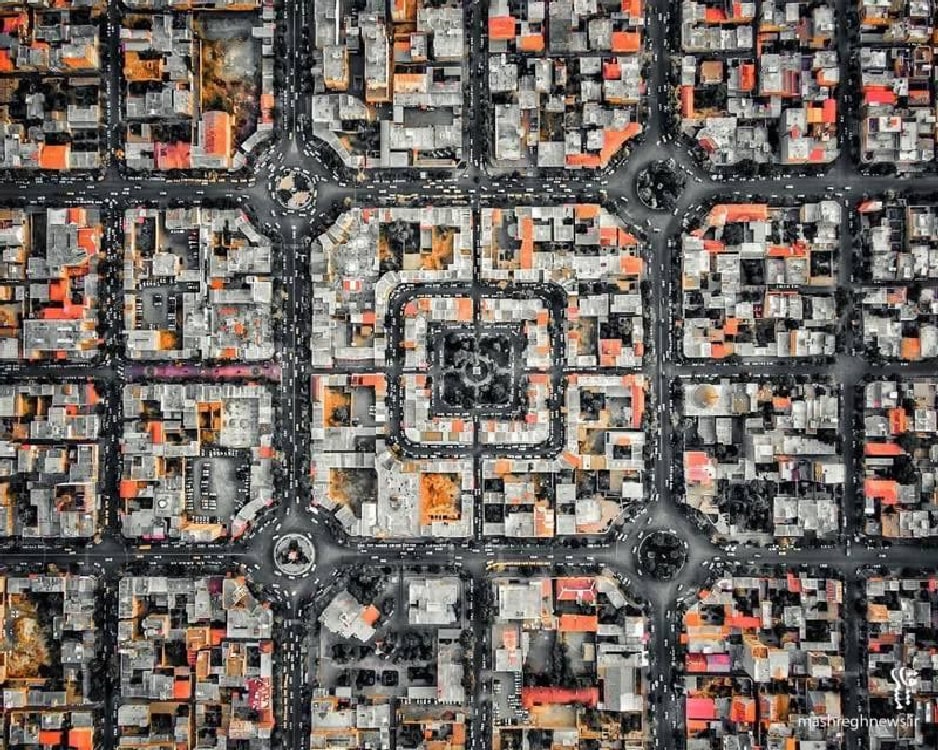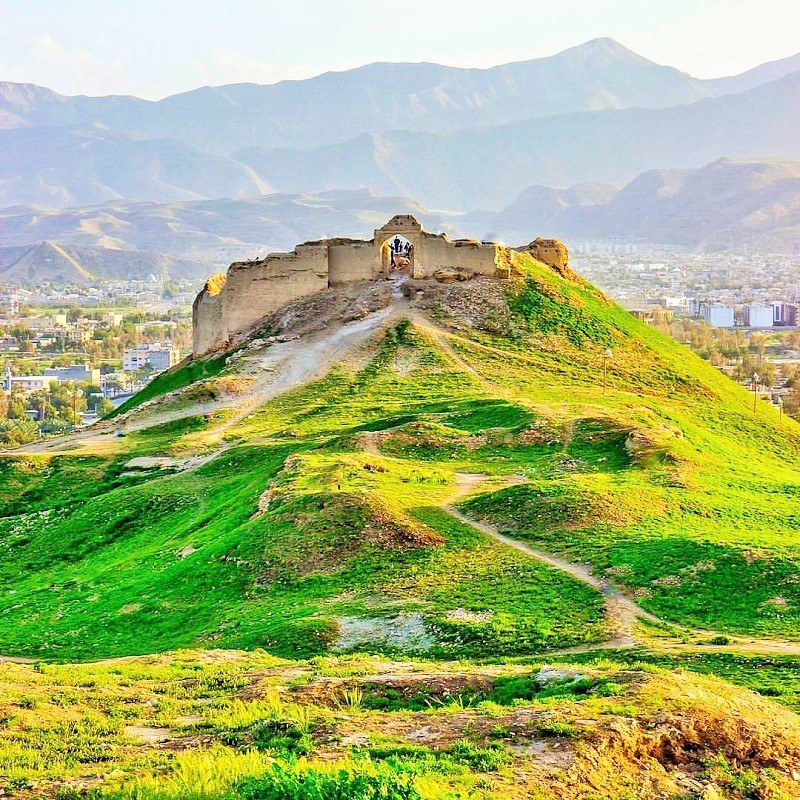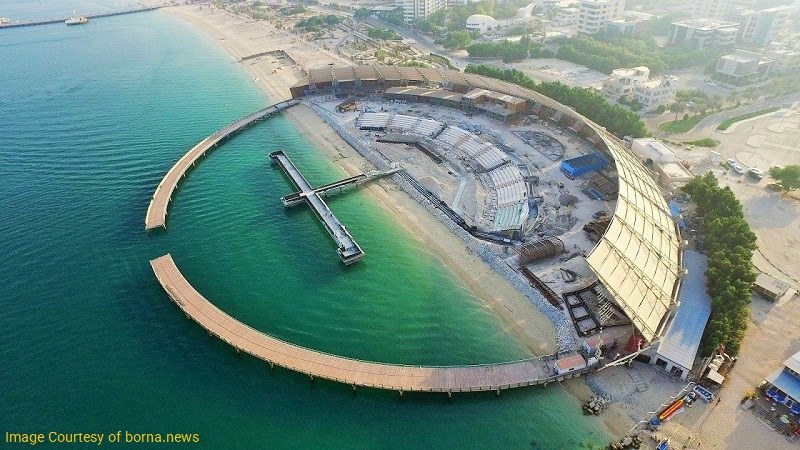Introduction of Tabriz
Tabriz is another fast-growing Iranian city with ancient history and spectacular sights to visit during a-few-days stay. Tabriz tourist attractions are both inside and outside the city. It has some unique sites that attract Iranian as well as non-Iranian travelers to explore the wealth of its history and culture. There have been traces of ancient dwellers choosing this place because of its location as well as political reasons.
Originally, Tabriz was formed as a combination of several neighborhoods. Today, they are all interconnected in ten districts by several underpasses, overpasses, and freeways within a network.
Geography of Tabriz
The city is the capital of Eastern Azerbaijan province of Iran in the northwest of Iran with an altitude of 1390m above sea level. Except for the western side, it is surrounded by mountains on every other side and located between two rivers called Aji River and Quru River. This makes it both spectacular and enjoyable with the likable climate in summer time although it is relatively cold in winter. The plain on the west leads to a water basin ending up in Urmia Lake.
The average annual temperature is at a maximum of 18°C and in a minimum of 6°C in Tabriz. The average annual rainfall is 310 mm.
Here are the different ways of traveling to Tabriz:
- By car
The nearest and the best route between Tehran and Tabriz is about 687 km and is through Zanjan-Tabriz Highway. This route takes about seven hours. First, you have to get to Tehran – Karaj Highway and then you reach Qazvin City. Then, you continue Qazvin-Zanjan Highway and finally, after passing through Zanjan, you will reach Zanjan – Tabriz highway.
Traveling to Tabriz is possible by passenger cars and buses. South, Beyhaqi and West terminals of Tehran have daily buses leaving for Tabriz.
- By airplane
Tabriz Airport has a daily flight to Tehran, Shiraz, Rasht, Assaluyeh, Mashhad, Kish, Istanbul, Isfahan, Baku, Bandar Abbas, and Ahvaz. Traveling from Tehran to Tabriz takes about an hour by airplane.
- By train
Tabriz Railway Station has trains leaving for Tehran and Mashhad. There are other stations along the route. For example, Zanjan, Qazvin, Maraqeh, Takestan and other cities have a station on the route. Traveling from Tehran to Tabriz by train takes about 9 hours.
Economy & Population of Tabriz
There are approximately 1,618,000 people living in Tabriz and more are migrating to the city because of its fast industrialization process offering jobs to the inhabitants of other villages and towns living nearby. In terms of population, it ranks the 5th city of Iran.
The face of the city has changed a lot in the recent decade because of the city re-planning, further industrialization and urban developments making Tabriz an enjoyable city worth visiting.
Currently, important industries such as tractor manufacturing, machinery, cement, and textile are active in Tabriz. A part of the economy of Tabriz relies on agriculture and horticultural products in the surrounding villages and towns. Sahand Industrial Town is a major sector of Tabriz’s economy due to its small and medium workshops.
History of Tabriz
The city has gone through lots of devastating foreign invasions as well as earthquakes. Despite all the natural and political destruction, it stands firmly and proceeds powerfully to create a better future for its inhabitants in modern times and the future. The name of the city has been mentioned in the documents discovered from Assyrians, the first millennium B.C. Some skeletons and artifacts of the people living during that period at the northern part of the Blue Mosque, inside the city, has indicated the origin of the urbanism in this spot goes back as far as that time.
In the pre-Islam period, most probably under Sassanians, Tabriz grew into a notable city and prospered until the Arabs invasion in the 7th century after which it was resided by the invaders. Mongols chose Maragheh as their capital city and Tabriz lost part of its importance and did not continue as the most important city in the region. Only one of the Ilkhanid dynasty declared it as his capital city. Under other rulers of this period, as the location of the city is on the Silk Route could not be denied, it still played some major role in the politics of the time’s rulers.
Timur destroyed Maragheh when he attacked Iran after the Ilkhanids’ era. Later Tabriz became the capital of Kara Koyunlu and Ak Koyunlu tribes ruling from that area in Iran. It gained more attention again under Safavids as another capital city of Iran. Although Safavid kings moved the capital from Tabriz later, it kept its importance because of the role it maintained in the foreign trade with the Ottoman Empire, Russia, central Asia, and India.
During the 19th century’s Iran-Russia wars, Tabriz went through a series of disturbances. However, because of the special attention of Abbs Mirza, the Qajar crown prince, the city was lucky enough to be the launching pad for several modernization processes and later it went through the same urban and military modernization processes itself.
In the early 20th century, Tabriz became the center of the Institutional Revolution in Iran that lead to the establishment of a parliament in the country. At the time of Reza Shah, founder of the Pahlavi dynasty, the entire country went under a reunification leading to regaining territorial integrity, revitalizing national identity as well as cohesion. An integrated Iran was reborn and the industrial modernization process began to take huge leaps.
During World War I, Ottomans and Russians occupied the city and during World War II, the Allied Forces did the same. In the 1979 revolution, the people of Tabriz played a major role in the revolutionary developments again. At the time of the Iran-Iraq war, the people living there defended the country like other provinces of Iran.
Historic Attractions inside the City
Here’s a list of Tabriz tourist attractions inside the city:
House of Constitution
It is also known as the Mashrooteh Museum. It used to be the gathering place of the leaders of the constitutional revolution in Iran during the early 20th century.
Azerbaijan Museum
This is categorized among national museums showcasing the items from different eras and all over Iran in a beautiful way. There’s a unique collection of modern arts by an Iranian artist displayed in the basement too.
Tabriz Grand Bazaar
This is a World Heritage Site worth exploring as the largest roofed bazaar in the world that used to be on the Silk Route playing an important role as a commercial and economic center.
Mozaffariyeh section of Tabriz grand bazaar is a must-see place.
Tabriz Jame mosque
This large congregational mosque is attached to the grand bazaar with fabulous brick-works from Seljuk and stucco works from Ilkhanid periods.
Blue (Kabud) Mosque
This the 15th-century mosque was built during Kara Kolyunlu period with dark and bright blue tiles. There is a mausoleum in the southern section of the mosque where the builder, Jahan Shah, is buried.
Arg-e Alishah
This is the massive remnant of Ilkhanid mosque built like a military castle or a mosque. Obviously, It dates back to the 14th century.
Saint Mary Church
This is the oldest church inside Tabriz, which dates back to the 12th century. For several years, it was the seat of the Azarbaijan Armenian Archbishop.
Ganjei House
This traditional house belongs to the Qajar period. It is located opposite the Faculty of Architecture in Maqsoudieh Historical Neighborhood. It is an inscribed national heritage of Iran. Iranians have refurbished this historic house during various periods. The monument is now part of the Faculty of Architecture of Tabriz Islamic Art University.
Qajar Museum
The museum is, in fact, the former house of Amir Nezam Garousi. The construction of this house dates back to the Qajar period and is typical of a home in the cold climate. The museum is located near Maqbarat-o-Shoara (literally means the Mausoleum of Poets) in Tabriz. This memorial monument accommodates the tombs of more than four famous Iranian poets including Shahriar, Qatran, Asadi Tusi, Faryabi and Seqat-ol-Eslam.
Amir Nezam Garousi was an Iranian politician, minister, diplomat, and ambassador in England, Austria, the Ottoman Empire, and France. He was also a literary figure, writer and calligrapher in the Qajar era.
Nobar Historical Bath (Vazir Bath)
This bath dates back to the Qajar era. After restoration, it is now used as a restaurant with traditional food.
El Goli
It’s the name of a park in Tabriz. There’s a building in this famous garden in the middle of a large pool, which serves almost like a symbol of Tabriz. The pool was originally a source of agricultural water for the surrounding area.
El Goli garden with its mansion is located near other symbols of Tabriz City such as Maqbarat-o-Shoara and Sa’at Square (Clock Square). El Goli Garden is located 7 km away from the city center. The garden belongs to Aq Qoyunlu era and Iranians expanded it during the Safavid period.
Maqbarat-o-Shoara (Sorkhab Cemetry)
Known also as Hazirat ol-Shoara and Hazirato ol-Qaza, this symbolic monument is the burial place of some of the Iranian poets and mystics. The tomb has remained from the 14th century, but the symbol built on it dates back to 48 years ago.
Tabriz Municipality Palace and Museum
The monument is located in the city center, on Sa’at Square. Near the top of the building, there is a large clock installed and therefore it is famous as Sa’at Square, which literally means Clock Square. The construction of this monument dates back to 1935. Since the beginning of construction, the building has been the municipality of Tabriz. The clock inside this building is four-sided and visitors can see it from four sides. A part of the building is dedicated to the museum.
Shahriar House
The house belonged to Shahriar, the contemporary Iranian poet. It is now a museum and a tourist attraction of Tabriz. This house is about 60 years old.
Parvin Etesami House
This house belonged to Parvin Etesami, the most famous female Iranian poet. Its construction dates back to the first Pahlavi period (about 70-80 years ago).
Tabriz Fire Fighting Tower (Yanqin Tower)
The building is the first firefighting tower and facility of Iran. It is 23 meters high and its construction dates back to the late Qajar period. Tabriz was the first city in Iran to have had a fire extinguisher machine and water pumping system with handheld copper pumps.
Ali Monsieur House
This building belongs to the second mayor of Tabriz. Ali Monsieur was one of the most prominent Iranian revolutionists in the last 100 years.
Qari Bridge
Qari Bridge, or Qari Qurpusu in Azerbaijani language, or Cheragh Bridge, is located on the river of “Chai Square (Mehranehrud)”. The construction of the bridge dates back to the Qajar era to connect the two parts of the city.
Iron Age Museum of Tabriz
The museum shows some tools dating back to 4000 years ago. The museum exhibits the skeletons of rich people with expensive objects. This is the first Iranian outdoor museum. Most of the objects identified in this area belong to the Iron Age.
Historic Attractions outside the City
Here’s a list of Tabriz tourist attractions outside the city:
Kandovan Rock Houses
This 700-year-old village is 40km southwest of Tabriz, which is still inhabited in its own style. People live inside volcanic rocks carved in the form of dwelling chambers.
Saint Thaddeus Monastery
It’s also known as Kara Kelisa (black Church). It’s a World Heritage Site 265km northwest of Tabriz. It dates back to the 10th century and restored after the 14th-century earthquake in the region. Most of today’s structure is the result of the restored work of the 19th century.
Saint Stepanos Monastery
This is an Armenian Monastery built during Safavids close to Aras River, the border river between Iran and Armenia.
Khalatpooshan Tower of Tabriz
The monument is located 10 kilometers east of Tabriz. It belongs to the Safavid period. The shape of this building is prismatic and it is made of brick. At the Qajar era, this building was a site to grant samite and rank to Azerbaijani rulers.
Babak Castle of Tabriz
The monument is located 150 km from Tabriz, on a mountain peak. In the Sassanid period, this castle was the stronghold of Babak Khorramdin, a well-known Iranian patriot and leader who fought against the Arab invaders in Iran.
Natural Attractions of Tabriz
Here’s a list of Natural Attractions around Tabriz:
Oan ibn Ali (Eynali, Eynal or Zeynal)
The complex consists of a mountain and tomb above Sorkhab mountain range located in the northern part of Tabriz. In addition to the tomb, there are amenities such as gondola lift and restaurant.
Aynalu Protected Area
Aynalu Protected or Tourism Area is located in a village of the same name. Inside the village, there is a two-story mansion, similar to old French castles and 19th-century European mansions. This area is located 45 kilometers from Kaleybar City. It is 232 km away from Tabriz.
Arasbaran Forest
The area has a variety of animal and plant species. This forest is also famous for Arasbar, Arazbar, Qareh Daq, and Qaracheh Daq. It is 227 km away from Tabriz.
Kental National Park
In this area, you can see the remains of stone mills. The park is 139 km from Tabriz.
Wrecked Mill Fall
Asiab Kharabeh Waterfall or Wrecked Mill Fall is located in Jolfa County. This area is 160 km northwest of Tabriz. The mill has become famous for the ruins of a watermill. Located at the edge of Aras River with a height of 10 meters and an area of 200 m2, it is one of the tourist attractions in Tabriz.
Qurigol Wetland of Tabriz
The wetland is located 45 km southeast of Tabriz and 15 km west of Bostan Abad City. The water of this wetland is irregularly shaped by the flow of snow, rain and underground springs. The deepest point of Qurigol Wetland is 13 m.





